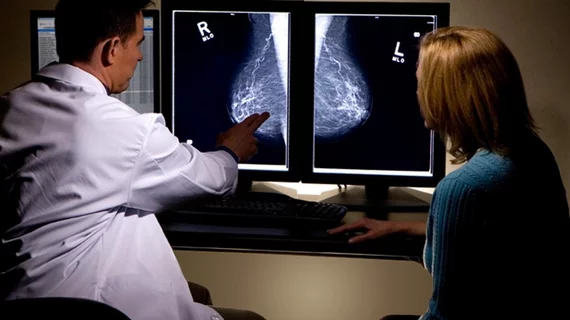Subjectivity remains a challenge among radiologists using BI-RADS 5 for breast density
A study published recently in Clinical Imaging revealed that subjectivity remains a challenge among radiologists assessing breast density using BI-RADS fifth edition guidelines.
The Breast Imaging Reporting and Data System (BI-RADS) guidelines were developed to categorize mammographic findings. As technology and research evolve, the recommendations are updated. However, research has revealed reader subjectivity as a long-standing nuisance of categorizing breast density.
“Although quantitative methods have been developed and are improving, density is mostly determined by radiologists' visual assessment, which is subjective and prone to under- or over-estimation,” corresponding author, Leah H. Portnow, MD, with the department of radiology at Brigham and Women's Hospital, and co-authors explained.
To better understand how density assessments have evolved as guidelines have updated, the researchers examined interreader agreement among six experienced (20-30 years) breast imaging radiologists using BI-RADS fifth edition guidelines to interpret 200 screening mammograms in 2019. Those findings were then compared to 2016, when those radiologists interpreted the same 200 mammograms using BI-RADS fourth edition guidance.
“The current 2013 BI-RADS fifth edition lexicon has new guidelines for breast density categorization that considers tissue complexity and masking effect, replacing the previous four edition breast density guidelines based on percentage quartiles,” the authors continued.
Researchers found the interreader agreement between BI-RADS 5 and 4 was relatively high, at 0.73 and 0.71, respectively. Using fifth edition guidelines equated to higher density categorization compared to BI-RADS 4.
The study took it one step further by comparing the interpretations of the experienced radiologists to the findings of a less experienced (1-5 years) group of junior breast imagers, noting such experience did not sway subjectivity.
The results further prove that reader variability in density assessment remains an issue and, therefore, the emotional and financial implications of labeling findings as “dense” should be seriously considered, the authors suggested.
“A gold standard of density determination is needed for reliable, reproducible, and consistent quantitative methods, potentially using emerging artificial intelligence technologies,” they wrote.
You can read the detailed research in Clinical Imaging.

